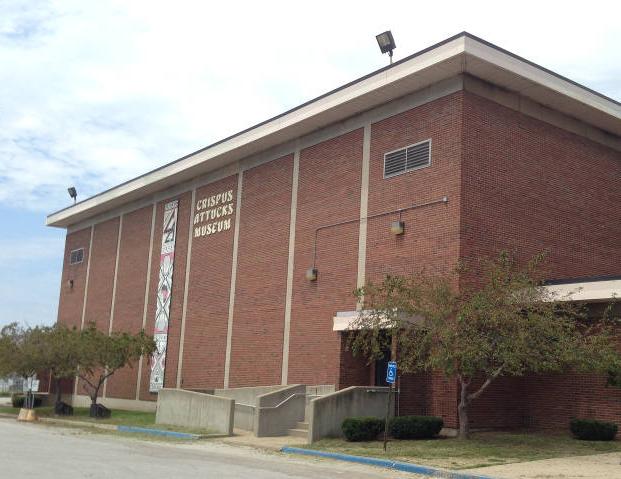The Crispus Attucks Museum opened at Crispus Attucks Middle School in 1998. The founding curator, Gilbert Taylor, spent eight years developing it. Attucks, which opened in 1927, was historically significant as the first segregated high school in Indianapolis. It was named after a whaler, sailor, and stevedore of African American and Native American descent who is commonly regarded as the first person killed in the Boston Massacre of 1770, a deadly street riot between American colonists and British soldiers that led to the American Revolution. Gilbert wanted to create a museum with documents, photographs, drawings, books, busts of famous Black leaders, newspaper clippings, and memorabilia to raise consciousness about the heritage of the school and African American life and culture. Many items, such as a mask from the Drogon people of Africa, came from Gilbert’s personal collection.

Due to a decline in high school enrollment, the transformed into a junior high school in 1986. With this transition, those parts of the middle school not needed for classes were converted for use by the Crispus Attucks Center. The center includes the Office of African American History and Multicultural Education as well as the museum.
The scope of the museum extends beyond the near westside school and even Indianapolis. In addition to information on Attucks’ graduates who achieved fame, including jazz musician , Congresswoman , military leader Major General Harry W. Brooks, civic leader , athlete , and actor , the museum also provides perspectives on African American history and culture.
The museum has four galleries, with 38 exhibits. The exhibits explore African American settlements, the Underground Railroad, the Tuskegee Airmen, African textiles, and Indiana African American organizations. A special exhibit called a “Tunnel of Rights” focuses on African Americans’ resistance to slavery and movements to achieve human, civil, economic, and legal rights. The “Examination of Community” exhibit covers the Africa American experience in Indianapolis. It includes tributes to Crispus Attucks High School; , the first major public housing project in Indianapolis; 14 early African American elementary schools, such as ; the Terry clock, which stood in front of Curtis Franklin Terry’s store on and found a new home on the east plaza of in 1977; and Indianapolis jazz musicians such as . The “Seeds of Learning Gallery” pays tribute to the Moorish Empire in north Africa, Timbuktu in west Africa, and Zimbabwe in southeast Africa. The museum also has a resource and research room that is available to scholars and others interested in African American history.
The museum includes temporary exhibits that celebrate the successes and struggles of local, state, national, and international African Americans. hosts a touring exhibit at the museum when the organization hosts its annual celebration of Black heritage in Indianapolis. The museum has traded resources and artifacts with the in a continued effort to keep its exhibits current.
In 2009, the museum underwent a renovation that came three years after the Crispus Attucks Middle School became a medical magnet high school. The Indianapolis Public Schools made this change, in part, because of the school’s proximity to the campus of the and its associated hospitals. In connection with this renovation, Robert Chester, the museum’s curator since 2005, put more historical records from the school on display and enhanced the standing exhibits. Indiana University loaned the museum material for an exhibit that traced the evolution of traditional Black music into today’s pop music.

Help improve this entry
Contribute information, offer corrections, suggest images.
You can also recommend new entries related to this topic.